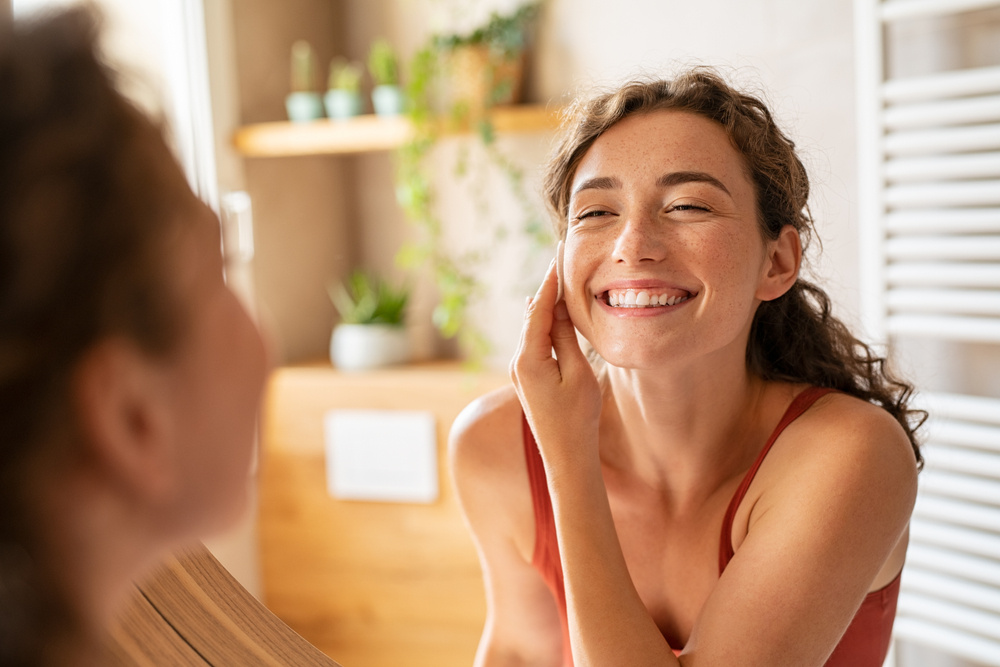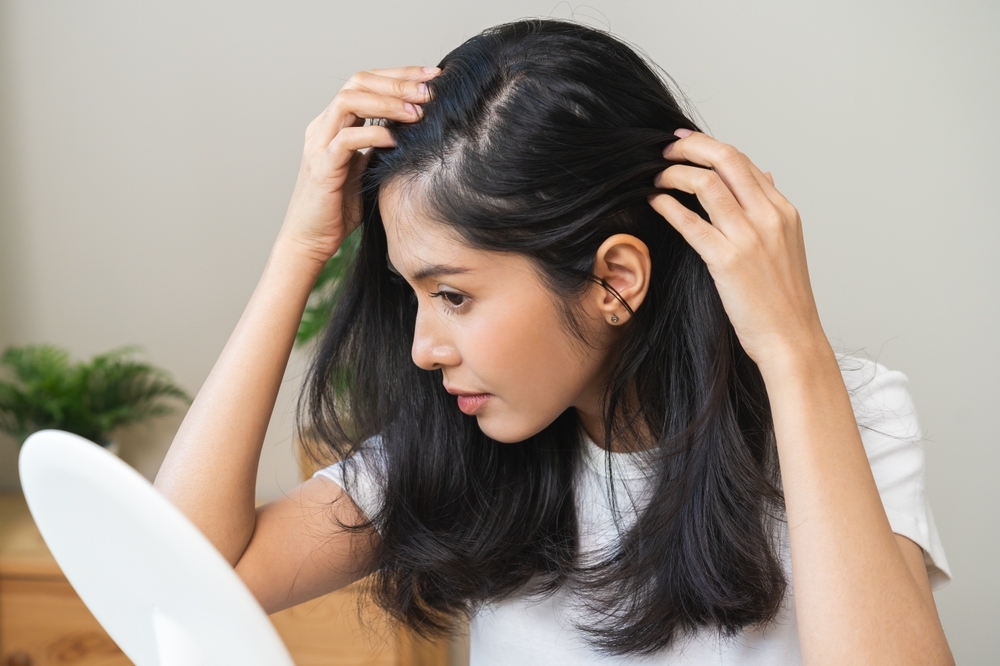How to Tackle the Skin Condition Affecting Millions
Hundreds of millions of people worldwide suffer from a skin condition called rosacea – as many as 415 million, according to a study published by the National Rosacea Society. And as the American Academy of Dermatologists puts it, “Rosacea causes more than a red face.” Surveys show that self-esteem, social life, and even productivity at work can be hurt by rosacea.
What exactly is this condition that can have such negative effects? And how do you treat it?
First, the Bad News about Rosacea
Let’s start with the bad news first: rosacea is chronic, meaning it can’t be cured. And we don’t yet know what causes it. We do know that it’s been shown to happen more often after you turn 30, and to affect women and those of northern European descent more often.
Rosacea can take multiple forms, but typically you’ll see:
- Persistent redness: This can look like you’re constantly embarrassed or sunburnt.
- Skin thickening: Less common is when the skin gets thicker and bumpy.
Beyond the physical effects, rosacea has psychological effects, too. Based on surveys by the National Rosacea Society (NRS):
- Nearly 90% of rosacea patients linked lower self-confidence and self-esteem to the condition.
- 41% said they tried to avoid being out in public.
- For those with severe rosacea, nearly 88% said it had a negative impact on their work interactions – with almost half saying they had missed work because of it.
Now for the Good News
How can there be any good news about a potentially disfiguring condition with no known cure? “A cure is different than treatment,” says Dr. Lillian Soohoo of Golden State Dermatology. “We have multiple effective treatments. The sooner we can diagnose the condition, the sooner you can see positive results.”
The NRS survey data backs that up: More than 70 percent of respondents said medical treatment “improved their emotional and social well-being.”
Before we talk about treatment, let’s look more closely at the four categories of rosacea.
The Four Types of Rosacea
- Red Skin/Visible Blood Vessels (Erythematotelangiectatic rosacea)
Blushing every once in a while is common. If you notice that you’re getting red more often, and when you turn red you get the sensation of heat, that can be a sign of rosacea. Frequently, you’ll also see small but visible blood vessels on the cheeks or the nose. Skin will be extra sensitive and may even be swollen. - Acne rosacea (papulopustular rosacea)
Just like blushing, most of us have probably experienced acne or small bumps that go away. Rosacea can also show up in small bumps (including any filled with pus), but without blackheads. Some people also feel a burning or stinging sensation. Skin is usually oily and red, and sometimes accompanied by raised, scaly patches. - Eye issue (ocular rosacea)
Sometimes rosacea shows up in the eye area, with red and swollen eyelids. You may find yourself getting styes, or just having “crusty” eyes. You may see less clearly and/or feel like you have grit or sand in your eyes. - Thickening skin (phymatous rosacea)
This is, fortunately, much less common. It shows up as thicker skin, or larger pores, with broken blood vessels and red skin. It can happen more commonly around the nose, and at its worst, can interfere with breathing.
No matter which of the above signs you see, when your skin takes a turn for the worse, it’s worth getting it checked out. Your skin is the body’s largest organ. Just like you wouldn’t gloss over an upset stomach for days in a row, don’t gloss over changes in your facial appearance. Skin changes are a health signal saying, “time to talk to a professional.”
Better Days Are Ahead: How to Treat Rosacea
If you notice any of the above, the first step is to visit a dermatologist. You’ll need a diagnosis as well as a comprehensive approach for the best results. And to set the stage right away: you may need to look beyond medication or lasers to your everyday habits. What you put on your skin and into your body has a direct effect on your skin’s health.
Daily Habits
Your dermatologist will want to learn more about what else is going on when you have a flare up. “We have to play detective to a certain extent,” says Dr. Kerry Heitmiller of Golden State Dermatology. “We want to identify triggers that are making your rosacea worse or better — like stress, spicy food, sun exposure — and we want to look for any other health conditions that might have an impact on the treatment plan.”
Some basic daily habits would include:
- Skip the (direct) sun. Being outside can have multiple health benefits, but those need to be balanced with sun sensitivity. Wear SPF 30 or higher every day (look for those that contain only titanium oxide and zinc oxide, which is better for sensitive skin), avoid being outside when the sun is highest, wear protective clothing (including hats), and whenever you can, seek the shade!
- Be gentle. No more exfoliating! You want to be as kind as possible to your face – no scrubbing or harsh chemicals. Avoid hot water (including long showers) and try to put as few products on your skin as possible. Given the abundance of options out there, it’s best to ask your dermatologist for specific dos and don’ts.
- Nutrition that nourishes. Drink plenty of water and avoid food with lots of chemical preservatives. What’s good for your body (unprocessed foods, healthy fats, antioxidant-rich foods, fiber) is also good for your skin.
- Topical vitamin C serum. The anti-inflammatory bioflavonoids in Vitamin C can strengthen blood vessels, which is useful because part of rosacea is blood vessels that dilate too easily (the redness that’s a common sign). “You want to reduce inflammation without irritating the skin further,” says Dr. Soohoo. “Because it’s key to treat rosacea gently, we find Vitamin C products good for protection as well as hydration.” Golden State Dermatology recommends products like SkinCeuticals C E Ferulic, Silymarin CF, and Phloretin CF; and Obagi Professional-C in 10%, 15%, and 20% strengths.
Medical Treatments
Here is an overview of some options your dermatologist can discuss with you.
- For red skin and visible blood vessels (erythematotelangiectatic rosacea): treatment could include prescriptions like brimonidine gel and oxymetazoline hydrochloride cream. Another option is laser treatment. Some people experience a strong improvement – skin that isn’t red or bumpy anymore. Others might see changes that aren’t quite as complete, but still noticeable.
- For acne rosacea (papulopustular rosacea): multiple topical prescriptions are available, as well as antibiotics and laser treatments. Although everyone will have different treatment plans, the good news is that acne rosacea patients typically experience good results.
- For thickening of the skin (phymatous rosacea): this rare version can be treated with medication or with surgery (in extreme cases). The sooner you notice this condition and start treatment, the better.
- For eye issues (ocular rosacea), treatment may involve warm compresses for immediate relief, topical medication, and antibiotics. You may need to wash or treat your eyes multiple times a day. Your dermatologist may also refer you to an ophthalmologist for a thorough eye exam.
Rosacea doesn’t have to limit your social life or your work life. And it certainly doesn’t have to be a daily discomfort or pain. Golden State Dermatology is here to care for the part of your body that faces the world. Whatever is causing you concern, come see us!







